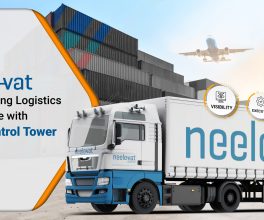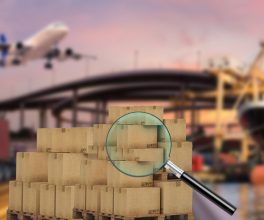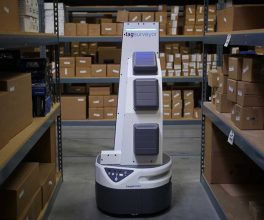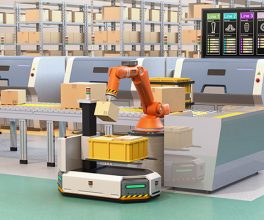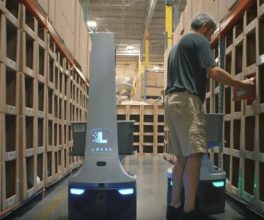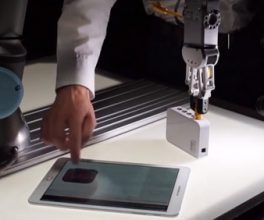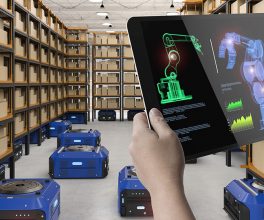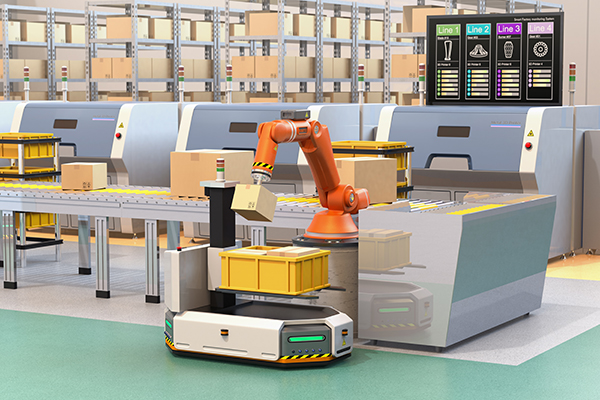While fully-automated warehouses remain a pipe dream for many e-tailers, many are now using software, automation and sensors to get closer to their customers.
What will the warehouse of the future look like? According to an article in The Electrical Distributor by my colleague Bridget McCrea, it might include warehouses that extend vertically into the sky, rely on drones for delivery and utilize robots for lights-out order fulfillment.
The future isn’t as far off as you might think. Google “JD.com fully automated warehouse,” and you’ll find a video of the Chinese e-tail giant’s lights-out e-commerce distribution center in Shanghai. There, people are mostly for show. Robots and automated materials handling systems do virtually all of the warehousing and order fulfillment work. It’s remarkable to behold, even to someone who has seen a lot of warehouse automation.
While fully automated facilities like JD.com’s are still the exceptions to the rule, there are some significant trends and market changes that are shaping how the warehouse of the future might operate. Here are a few.
Fulfillment
What will the warehouse of the future look like? According to an article in The Electrical Distributor by my colleague Bridget McCrea, it might include warehouses that extend vertically into the sky, rely on drones for delivery and utilize robots for lights-out order fulfillment.
The future isn’t as far off as you might think. Google “JD.com fully automated warehouse,” and you’ll find a video of the Chinese e-tail giant’s lights-out e-commerce distribution center in Shanghai. There, people are mostly for show. Robots and automated materials handling systems do virtually all of the warehousing and order fulfillment work. It’s remarkable to behold, even to someone who has seen a lot of warehouse automation.
While fully automated facilities like JD.com’s are still the exceptions to the rule, there are some significant trends and market changes that are shaping how the warehouse of the future might operate. Here are a few.
Fulfillment
The warehouse of the past was a place to store finished goods that moved in and out on pallets. Corporate considered them a necessary evil and a cost center. Today, warehouses are promise keepers: Their job is to enable a company’s go-to-market strategy and make good on the promises made by the marketing and sales departments. Order turnaround — the time it takes to pick and pack an order so it is ready for pickup by a delivery company before the cutoff time — is measured in hours rather than days.
An example: One industrial distributor promises to have your order an outbound truck the same day you order it, or they’ll cut you a check. They can’t make good on that promise without a distribution center designed around fulfilling that promise. That’s an entirely different problem than figuring out how to store more pallets in an existing space.
Selection and velocity
Distribution centers (DCs) are tasked with carrying more items, or SKUs, than ever in order to keep customers on a site. At the same time, that inventory is spending less time than ever in the DC. In the most recent survey of Modern Materials Handling’s readers, one of the magazines I edit, the number of SKUs was up by 6 percent, while the number of inventory turns was up by 10 percent.
More automation
The labor shortage that’s making the news today is old news to warehouse managers. They’ve been battling a war for talent for years. Thanks to the growth of e-commerce, it’s more acute than ever. As a result, the distribution industry is in the middle of an automation boom, driven by the need to take as much labor out of the process as possible. Technologies like high-density automated storage, shuttle systems, pouch sorters, put walls and automated packaging systems are ideal for handling items. While not in wide use yet, automated lift trucks are on the horizon. Some leading retailers are even taking inventory in their warehouses using drones.
Robotics
While adoption of robotics in distribution centers has been slow, they’re coming. We’re seeing the emergence of mobile collaborative robots that travel to a picking location where a warehouse associate drops an item into a tote. Stationary piece-picking robots then pick items from a storage tote and place them in a shipping container. We’re even seeing autonomous mobile piece-picking robots that can travel to a location, pick an item and travel to the next location until the order is complete. Right now, the market is limited to some brave early adopters who are piloting robotic technologies or going live with small implementations. But, as those early adopters learn how to get value from robotics, the space will grow.
Software and sensors
Warehouse automation used to be about “speeds and feeds,” or how fast a piece of equipment did its job. Today, it’s about how smart the system operates. Can the system orchestrate activities in the facility so that items picked in three different locations arrive at the packing station at the same time to close out an order? Can the system predict when a motor, a bearing or a conveyor is about to fail so you can address the problem before it shuts down your line? Solving problems like these is the result of sensors that monitor conditions and collect data and software that optimizes operations, and not mechanics. That’s why I like to say that in today’s warehouse, it’s all about the software.
Rethinking the warehouse
The typical warehouse is about 500,000 square feet and located in a distribution hub near a major parcel shipper, like Columbus, Memphis or Louisville, Kentucky. In the future, expect to see more, smaller facilities located near major urban areas as e-tailers try to get closer to their customers for same-day delivery. Expect those facilities to be two, three or four floors tall to get more storage space on an available footprint. And, expect to see more order fulfillment technologies going into retail store backrooms or empty stores in strip plazas and downtowns as retailers and the grocery industry utilize all the assets at their disposal to fill orders.
As someone who has covered this industry for more than 30 years, it really is an exciting time to work in warehousing and distribution. The future for the industry looks great.
Author – Bob Trebilcock
Courtesy of http://www.supplychain247.com/article/the_warehouse_of_the_future/warehousing

